Click on each project to learn more.
Delphi Display Systems: AI Driven Personalized Menu Content for the QSR Drive Thru
Partner: Delphi Display Systems
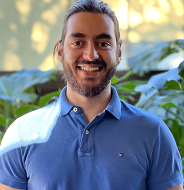
Arian Namavar
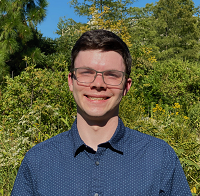
Ezra Hammond
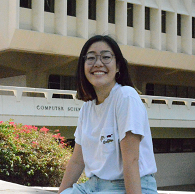
Rieko Konishi

Ryan Sakuma
Project Overview: In 2022, the experience of going and ordering food at a drive thru is the same for every customer at every restaurant. At the start of every drive thru line you are presented with the same menu that you saw last week. It never changes to fit your tastes, never changes recommendations, and never learns. A smart menu could incorporate dietary restrictions, environmental conditions, and your past orders to provide recommendations that will fit your palate and preferences. Even though 70% of all fast food orders occur in the drive thru, the lack of personalization in the process can make this convenient process unpleasant and slow, reducing the chance that customers will return.Currently, there is no solution to this problem. Drive thru menus are the same for all customers, and at most, their customization is limited to some sort of loyalty program within their app where a user can order something they bought previously. There are currently no AI systems to recommend menu items based on other factors like taste profile, dietary restrictions, nutritional requirements, or environmental data. This project is innovative because it will enhance the drive thru experience for customers, increase sales by decreasing the time customers spend in the drive thru, and improve customer loyalty.
Down App
Partner: Calit2

Austin Nelson

Angelo Basa

David Trang
Project Overview: It’s hard to find people that are willing to hang out, especially during this covid pandemic. Even harder is trying to align people’s schedules to do so. Humans are social creatures and being confined in your home for prolonged periods is mentally draining. Not only that, but with society media becoming more prevalent, physical meetings are far and few in between. It is getting increasingly harder to meet new people who enjoy the same hobbies as you. Currently, there is no effective solution to solve this problem; you have to rely on your existing friends’
availability to go out. It’s also hard to meet new people who have similar interests as you. In order to plan activities, you would need to find some way to join a group/club where people have the same interests/hobbies as you, and then connect with them. However, this doesn’t solve all problems, since your schedules still might not align. Down allows users to connect with nearby people with aligning schedules who are also interested in partaking in events, allowing users to freely make plans while meeting new people.
Knowde E2E Pipeline
Partner: Knowde

Evan Cheng

Alec Chen

Angel Alarcon

John Cuviello

Derek Lee
Project Overview: Unstructured PDF documents compose a vast majority of important technical and safety information exchanged between buyers and sellers in the chemical industry. The structure and relevant information vary greatly from document to document, resulting in a confusing experience that hinders the buying process for all parties involved. By creating an end to end pipeline which ingests this data and organizes it, Knowde will be able to more effectively facilitate communication between parties in these transactions. The worldwide chemical industry exchanges five trillion dollars in transactions annually and the industry makes up over 25% of the US GDP. Chemicals are important for nearly all the manufactured goods we consume in our lifetime and a more effective marketplace means that issues with the supply for these necessary goods may be prevented or minimized. Today, the problem is solved through a mix of traditional and machine learning methods for extracting data. Data that is present in graphs, charts, or non-standard tabular formats are unreachable via the traditional methods and require ML techniques like natural language processing to be extracted and named entity recognition to be organized into the desired format. The project can potentially bolster the efficiency of transactions in the chemical industry.
MedClerx: Patient Portal Website
Partner: MedClerx
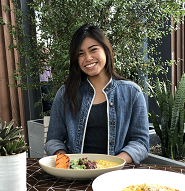
Jasmine Sreylack Som

Khushi Valia

Juanwei Hu
Project Overview: This project is to simplify and expedite the process of sharing patient medical records between various private practices, physicians, as well as provide patients with secured and centralized access to their medical records. Today, the most accessible approach of exchanging patient data remotely is via encrypted email or fax services. While there is progress to involve Biometric identification to access this sensitive information, the convenience of having a portal or a dedicated platform to share this information is not yet available. The team planned to design their deliverables such that every member in their group could practice in the area of the tech stack that they were most interested in (front-end, back-end, APIs). Their focus, as discussed with the MedClerx team, is to build out the user-interactive website and continue to build on the app. The team used Github and Gitlab to ensure version control. We used MongoDB, node.js, react and express, and use AWS for authentication. We connected to RIS for accessing physician workflow, physician orders, and patient demographics, and PACS which is a delivery system for dicom images. We handled both the backend and frontend for Medclerx’s website. One of their milestones includes creating a Figma mockup for the patient portal and designing a working prototype.
NetCity
Partner: Calit2

Deng Yuyang

Ameya Mandalik
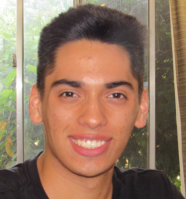
Zach Dorame-Barajas

Jason Nguyen
Project Overview: Today, 97% of commercial real estate still does not have solar, yet it contributes to 40% of C02 emissions; under 1% has battery or EV charging systems. These technologies are extremely expensive and complex to manage, driving away adoption and slowing down the decarbonization of our economy. At the current rate of deployment clean energy systems will be in less than 10% of buildings by 2035. At the same time, building a distributed energy network within cities is the most economical, safe and energy efficient solution. Through NETCITY’s clean energy platform, building owners can rent out their unutilized building space to investors or energy companies and automate the procurement of clean technologies at their properties. There was some frontend templating already completed in React. However, the templates needed a lot of work. On the frontend, there is a need to build out a user interface for logging in, logging out, and logic for user session management. There was currently no backend for the project and that will need to be built from the ground up. We created a new user on the website and showcased the features we built by interacting with the website as a potential client.
Nutrition and Allergen Data Pipeline for Ingredients from Nutripair Restaurant Partners
Partner: Nutripair

Jeffrey Huang

Jason Nguyen

Mariamawit Jembere

Ajie Valdejueza
Project Overview: Individuals with severe food allergies have to double-check menus since there is no cure for severe food allergies and the only treatment is to avoid the food(s) containing the allergen. Nutripair is a mobile platform that pairs you with the best food for your health conditions by providing a personalized restaurant menu selection, diet-specific filtering options, and easy-to-understand allergen & nutrition breakdown. Nutripair utilizes technology to generate accessibility and education in personalized nutrition for all individuals of varying socioeconomic status, ethnicity, and health. One problem the team was facing is given the ingredients of a food, provided by the restaurants, generating the nutrition breakdown, allergens, and other vital information that give a user the full insight as to what the food contains. Coming up with a scalable method to automate this step of the process will remove the hassle of manually analyzing and entering each field of information in the database which is time-consuming and prone to human errors. We used real-world restaurant data (ex: an ingredient list and nutrition label list for pizza) and pass those inputs into the pipeline. The pipeline should then process the data, and return a list of allergens and macronutrients. Furthermore, those lists of allergens and macronutrients will then be saved into Nutripair’s database for that specific food item and restaurant.
PCFS Small Business Loan Validation API
Partner: PCFS Solutions

Connor Couture

Brian Chan
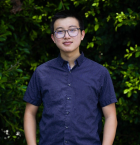
Dylan Tran
Project Overview: Loans are important for helping modern society function. PCFS Solutions assists small businesses by helping them get loans. We want to help PCFS Solutions make the validating process of loan applications easier, this way PCFS Solutions can operate more efficiently. Currently, PCFS Solutions uses humans to validate the loan applications, however, the end goal is to have an automated system that flags problems and potential problems in a loan application to streamline the loan application validation process. They currently have a website interface for their borrowers and lenders that they can use to monitor the loans. Currently their system does not have an automated way of validating the loan applications, thus requiring a lot of manual human labor to check through all the applications. The hope of the long-run of our project is to create APIs using a rule-based engine that will go through the applications, and flag areas where the application has insufficient or improper information. We created an API(s) for their system that will go through the loan application and ensure all the information inputted is acceptable and correct. A possible later extension of this project is integrating artificial intelligence into the loan application validation engine.
Prenostik
Partner: Prenostik
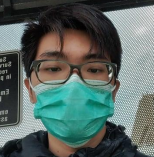
Arkar Chan

Joshua Montellano

Sanjana Magidewar
Project Overview: Learning can be hard, especially during a pandemic. Locations affect our mindset and in most people’s minds, school is a place to learn and home is a place to relax. However, due to this extraordinary time, students need to go against the norm and pursue their education from home. Therefore, discipline is a quality that all students studying remotely need. Our team believes that through Prenostik, we can help students build their own discipline by showing them their progress and providing them with data-driven guidance. There are a number of student learning dashboards available on the market as well. These utilize charts, machine learning personalization, chat, etc to help the students. However, one key difference between these learning dashboards and ours. Our dashboard will be directly integrated onto canvas for convenience. For teachers, the class data will be easily available for them and give them a sense of how the class is doing overall. For students, it shows them how they are doing in the class, the time it takes for them to complete assignments, and their study time. It will also show the student the class’s mean and median for these data points as well. For future courses, students will be shown previous course data to show them how much they should be studying to obtain certain scores on their assignments.
We will also plan to make the dashboard scalable so that it works on any course. Furthermore, implement machine learning methods for a personalized learning experience to help students improve their performance. We hoped to use learning data and machine learning to help them build better study habits. There are 2 sides to this application: a student view that focuses primarily on the students’ progress and a professor view that focuses on the class’ progress.